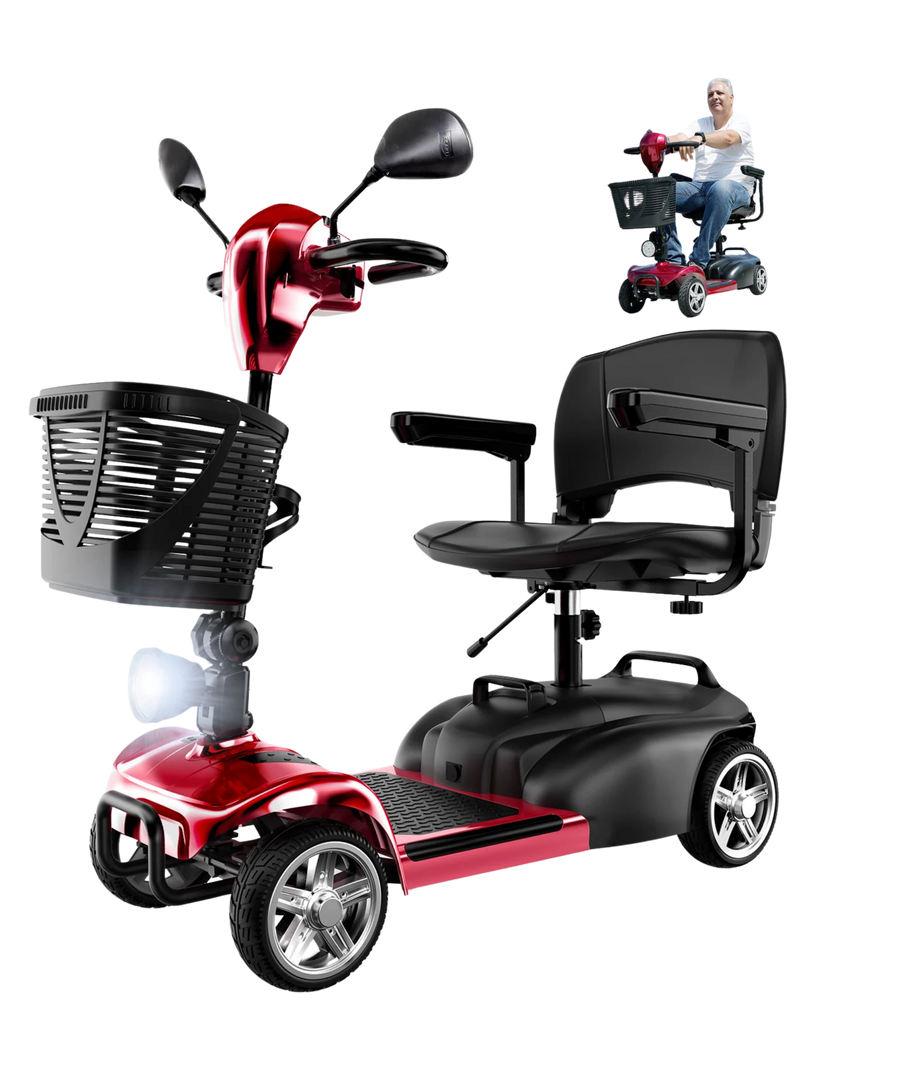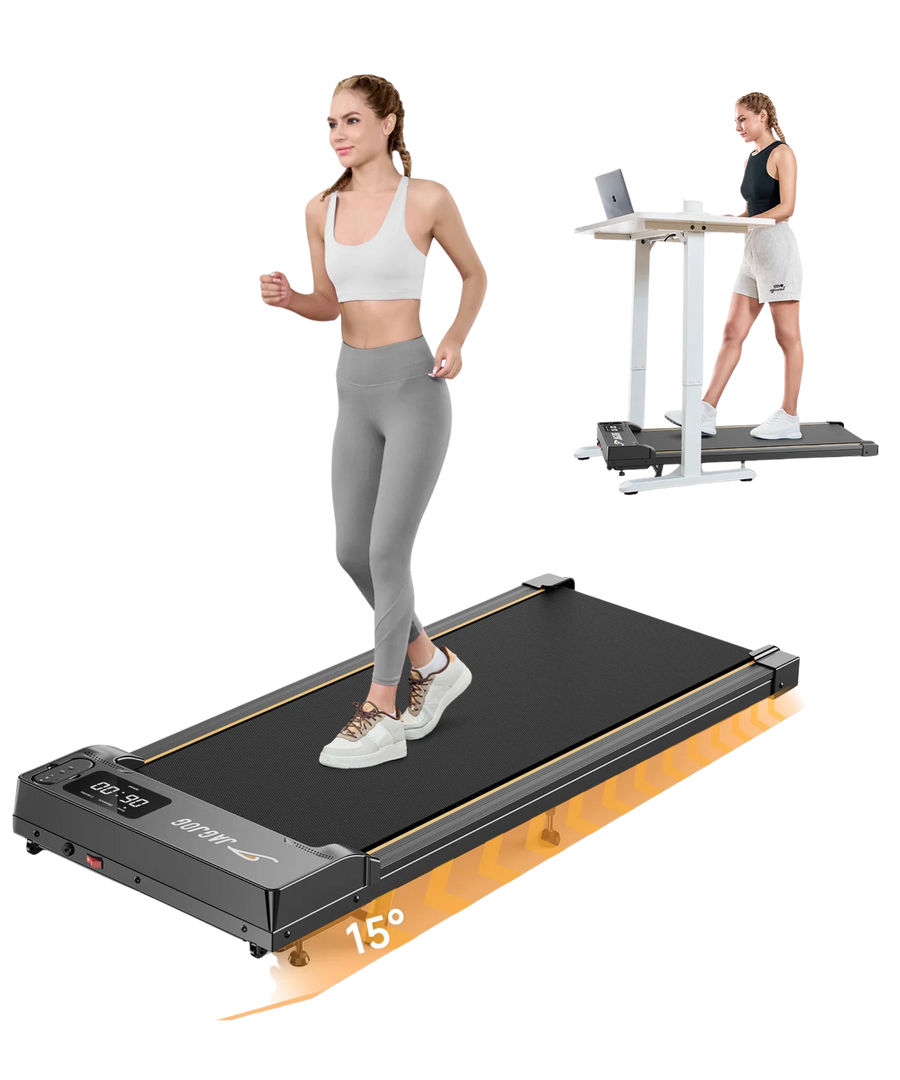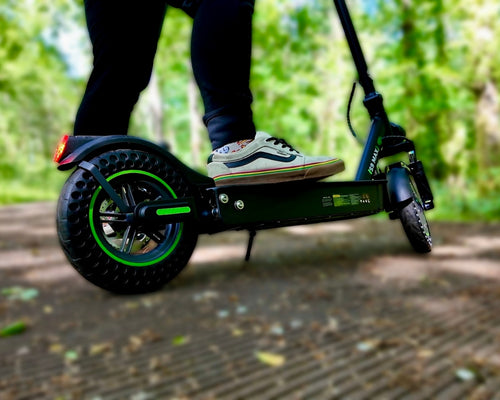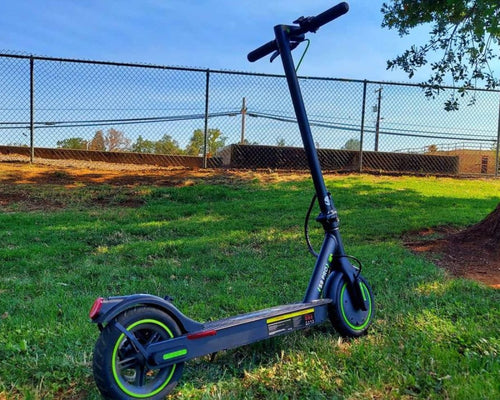
How to Measure a Bike Rim Size – Step-by-Step Guide
Measuring your bike rim size is essential for a safe and smooth ride, whether you’re on a road bike, mountain bike, gravel bike, or an electric bike. Knowing your rim diameter and width ensures your tyres fit perfectly, improves performance, and helps you avoid costly mistakes. In this step-by-step guide, we’ll show you how to measure a bike rim size accurately, using easy methods suitable for all types of bicycles, including e-bikes.
How to Measure a Bike Rim Size Accurately
Want to know how to measure a bike rim size quickly and correctly? Here’s the simple way:
-
Measure the Rim Diameter (Bead Seat Diameter / ISO Standard) – Place a metal tape measure across the rim where the tyre bead sits, or measure the rim’s circumference and divide by pi (3.142) for more accuracy. This gives you the diameter in millimetres, following ISO/ETRTO standards for tyre compatibility.
-
Measure the Rim Width (Internal and External) – Use Vernier calipers to measure the distance between the inner walls (internal width) and outer walls (external width). Internal width is crucial for safe tyre support, while external width affects frame clearance, aerodynamics, and brake fit.
By taking these two measurements, you can choose the right tyres for road bikes, mountain bikes, gravel bikes, or electric bikes, reduce the risk of blowouts, and ensure a stable, comfortable ride. Always check ETRTO/ISO charts to match your rim to compatible tyre widths.
Understanding Bike Rim Dimensions
Understanding bike rim dimensions is essential for selecting the right tyres, optimising cycling performance, and ensuring safety—especially for road bikes, mountain bikes, gravel bikes, and electric bikes. Knowing how to measure both rim width and diameter allows you to maintain proper tyre fit, avoid blowouts, and improve handling.
Internal vs External Rim Width
The internal rim width is the most critical measurement for tyre safety. It determines how well the tyre bead sits on the rim, supporting the sidewalls and preventing slippage or tyre blowouts.
In contrast, the external rim width affects frame clearance, wheel aerodynamics, and compatibility with rim brakes. Selecting the correct internal and external widths ensures that your tyres fit securely while maintaining optimal performance and safety.
Rim Depth and Diameter
Rim depth affects wheel weight, aerodynamics, and the tyre profile. Deeper rims can improve speed and stability but may add weight, whereas shallower rims offer lighter handling and easier acceleration. Rim diameter, measured according to ISO (International Organization for Standardization) or BSD (Bead Seat Diameter) standards, determines which tyre sizes are compatible with your wheel. Accurate diameter measurement is crucial for ensuring that tyres from different brands will fit safely and function effectively.
ISO/ETRTO Standards for Rim Sizing
The ISO/ETRTO (European Tyre and Rim Technical Organisation) standards provide recommended ranges for rim diameter and width, helping cyclists match tyres with rims correctly. Using these charts ensures compatibility for all bike types, including road, mountain, gravel, and electric bikes, and prevents tyre stretch, sidewall instability, and reduced cycling performance. Always follow ISO/ETRTO guidelines for safe, reliable, and high-performing rides.
Tools Needed to Measure a Bike Rim
Accurate bike rim measurement requires the right tools. Whether you’re measuring a standard road bike, a mountain bike, a gravel bike, or an electric bike, having the correct equipment ensures precise results and safe tyre fit.
-
Metal tape measure – Ideal for measuring rim diameter or circumference accurately.
-
Vernier calipers – Essential for precise measurement of internal and external rim width, ensuring your tyres sit securely.
-
Spoke wrench – Useful for built-up wheels where the hub or spokes may obstruct direct measurement.
-
Optional tools – Flexible wire or a ruler can assist with circumference measurements if a tape measure is difficult to use.
Using these tools correctly helps maintain tyre compatibility, prevents sidewall instability, and improves overall cycling performance.
Step-by-Step Guide: How to Measure a Bike Rim Size
Accurate bike rim measurement is crucial for tyre compatibility, safe cycling, and optimal performance. Whether you ride a road bike, mountain bike, gravel bike, or electric bike, knowing your rim size ensures tyres fit securely, prevent blowouts, and maintain handling efficiency. Here are three reliable methods to measure your bike rims in detail.
Method 1 – Standard Measurement
The standard measurement method is simple, reliable, and works well for most road, mountain, gravel, and electric bike rims. It provides accurate dimensions for selecting the correct tyres and ensuring safe riding.
Measure Rim Diameter
Place a metal tape measure across the centre of the rim, from bead seat to bead seat on the opposite side. For built-up wheels, remove the tyre if possible to get the most precise reading. Rim diameter is essential for tyre compatibility and is expressed in ISO/ETRTO millimetres.
Measure Rim Width
Use Vernier calipers to measure both the internal width (distance between the inner rim walls where the tyre beads sit) and the external width (distance across the outer edges of the rim). Internal width is critical for tyre support and safety, while external width affects frame clearance, aerodynamics, and brake compatibility.
Double-Check Measurements
Take at least three measurements at different points around the rim to account for slight irregularities. Averaging these readings ensures greater accuracy and prevents tyre fitting issues.
Select Compatible Tyres
Use the measured rim diameter and internal width to match your tyres. Always consult tyre manufacturer recommendations and ISO/ETRTO charts to avoid overstretched or unstable tyres, which could compromise safety and riding performance.
This method is ideal for routine maintenance and works reliably on road, gravel, mountain, and electric bike wheels, providing the accuracy needed for safe and smooth rides.
Method 2 – ISO/ETRTO Measurement
The ISO/ETRTO system standardises rim dimensions to ensure tyre and rim compatibility across all bike types, including road, mountain, gravel, and electric bikes. Using this method ensures precise tyre fit and safer rides.
Measure Bead Seat Diameter (BSD)
The BSD is the diameter of the rim where the tyre bead sits. Use a tape measure or Vernier calipers to measure this in millimetres. For example, most 700c road bike wheels have a BSD of 622 mm, while standard 26-inch mountain bike wheels measure 559 mm. Accurate BSD measurement is crucial to ensure tyres fit securely and reduce the risk of blowouts.
Measure Internal Rim Width
The internal width is the distance between the inner walls where the tyre bead sits. This measurement is critical because ISO/ETRTO tyre charts use internal rim width to determine safe tyre sizes. Using Vernier calipers provides precise measurements, which is especially important for high-performance bikes or electric bikes carrying extra weight.
Consult ISO/ETRTO Compatibility Charts
Once you have the BSD and internal width, check ISO/ETRTO charts to find the recommended tyre range. This ensures optimal tyre support, correct inflation pressure, and safe riding, preventing unstable or overstretched tyres that could compromise handling or cause accidents.
Built-Up Wheels
If the hub prevents direct measurement of the BSD, measure the rim circumference using a flexible tape or wire. Convert the circumference to diameter with the formula: Diameter = Circumference ÷ π (3.142). Add twice the rim depth to account for the bead seat if necessary..
Method 3 – Measuring Rim Circumference
The circumference method is a reliable alternative when direct diameter measurement is difficult, such as with hookless rims, deep-section aero rims, or electric bike wheels.
Prepare the Tape or Wire
Use a narrow metal tape measure or flexible wire for accurate results. Insert it into the valve hole and carefully wrap it around the full rim well. Avoid stretchable fabric tapes, as they can distort measurements and produce inaccurate rim diameters.
Measure the Circumference
Record the total length around the rim well precisely. This measurement captures the complete path of the rim where the tyre bead sits, which is essential for accurate tyre compatibility.
Calculate the Diameter
Divide the measured circumference by π (3.142) to determine the rim diameter. This gives the ISO-standard measurement needed to select compatible tyres for road, mountain, gravel, or electric bikes.
Adjust for Rim Depth
For deep-section or hookless rims, add twice the distance from the rim well to the bead seat. This ensures the measurement accurately reflects the bead seat diameter (BSD) used in ISO/ETRTO charts.
Verify Accuracy
Whenever possible, cross-check the circumference-based measurement with a direct diameter measurement using a tape measure or calipers. This step is especially important for carbon rims, gravel wheels, and electric bike rims, where precise measurements are critical for cycling safety, performance, and tyre longevity.
This method is particularly useful for hookless rims, deep-section aero rims, and wheels where the hub obstructs direct measurement, making it a reliable technique for road, gravel, mountain, and electric bike riders.
Using any of these methods ensures correct bike rim diameter, BSD measurement, and rim width selection. Proper measurements help maintain tyre integrity, prevent blowouts, and improve handling and comfort for all types of bikes, including electric bikes.
How Rim Width Affects Tyre Fit and Cycling Performance
Road Bikes
Modern road bike rims generally have an internal width of 19–25mm, which significantly influences tyre fit and ride performance. Wider rims create a more rounded tyre profile, improving stability, cornering precision, and handling at high speeds. Additionally, wider rims allow cyclists to run lower tyre pressures, which enhances comfort on long rides and reduces rolling resistance. This combination of tyre support and efficiency makes proper rim width essential for road cyclists, including those using electric road bikes for commuting or long-distance rides.
Mountain Bikes
Mountain bike rims are typically wider, ranging from 25–35mm internal width, to accommodate larger, high-volume tyres. Wider rims provide better sidewall support, reducing tyre deformation during aggressive cornering and technical trail riding. This enhances traction, control, and stability, particularly on rough terrain. Lower tyre pressures are also possible without risking pinch flats, making wide rims a key factor for off-road performance and safety on modern MTB and e-MTB wheels.
Gravel Bikes
Gravel bike rims, including both 650b and 700c sizes, are wider to support the heavier loads and varied terrain encountered in gravel riding. Wider rims ensure tyres maintain optimal shape, improving comfort, stability, and handling over loose or uneven surfaces. Proper rim width is crucial for tubeless setups, as it guarantees secure tyre bead seating and prevents blow-offs, which is especially important for gravel e-bikes carrying extra weight.
Hookless Rims
Hookless rims, increasingly common in both road and mountain bike designs, feature a straight-edged profile that requires precise tyre fit. These rims are designed primarily for tubeless tyres and offer advantages in weight reduction and simplified construction. However, adhering to manufacturer-recommended tyre pressures is critical to avoid blow-offs or tyre separation. Hookless rims also allow for slightly improved aerodynamics, making them popular among performance-focused cyclists, including e-bike riders looking for efficiency gains.
Proper rim width selection is essential across all bike types. Matching rim width to tyre size ensures safe, efficient, and high-performing rides, whether you’re cycling on road, trail, gravel, or riding an electric bike.
Tips for Accurate Rim Measurement
For accurate bike rim measurement, it’s important to take multiple readings across different points of the rim. This helps account for slight imperfections or variations in the rim shape and ensures that your measurements are precise. When measuring internal rim width, always use Vernier calipers, as they provide highly accurate readings compared to tape measures or rulers.
Refer to ETRTO and ISO charts to match your measured rim width and diameter with compatible tyre sizes. These standards help ensure tyre compatibility, preventing issues like tyre blowouts, improper seating, or unstable rides. Additionally, before selecting wider rims or tyres, always check frame and brake clearance, especially on road, mountain, gravel, and electric bikes, to avoid interference that can affect performance or safety.
Following these tips will ensure your bike rim measurements are precise, making tyre selection easier and improving cycling performance, comfort, and safety.
isinwheel UCity – The E-Bike Designed for Perfect Rim and Tyre Fit
The isinwheel UCity is an electric bike that excels in both performance and tyre safety, making it ideal for riders who want precision rim measurements and a secure tyre fit. Its 26×1.95" tyres paired with carefully engineered rims provide excellent support, reducing the risk of tyre slippage or blowouts even on longer rides or uneven surfaces.
Designed for urban commuting and light off-road adventures, the UCity combines comfortable ride quality with reliable handling. Its rim and tyre combination ensures optimal tyre pressure, stability, and responsiveness, allowing riders to maximize cycling efficiency without compromising safety.
Key highlights of the UCity include:
-
26-inch rims – perfectly sized for widespread tyre compatibility.
-
Dual disc brakes – precise stopping power matched to rim and tyre performance.
-
36V 10.4Ah battery – long-lasting rides without worrying about rim stress from heavy loads.
-
Pneumatic tyres – excellent shock absorption for smooth handling and reduced rim wear.
For cyclists focused on measuring bike rim size accurately and ensuring proper tyre fit, the isinwheel UCity is a top choice, offering ideal rim width, diameter, and tyre compatibility for safe and comfortable rides.
Conclusion
Measuring your bike rim size accurately is essential for tyre fit, ride performance, and safety—especially on electric bikes where precise tyre support is crucial. Always check rim diameter and internal width using proper tools and follow ETRTO/ISO standards to match tyres correctly.
For a premium electric biking experience, the isinwheel UCity offers 26×1.95" tyres and optimised rim sizing for stability, comfort, and smooth rides—perfect for city commuting or weekend adventures.
FAQs
How do I know the rim size of my bike?
You can determine your bike rim size by measuring the bead seat diameter (BSD) and the internal rim width using a tape measure or Vernier calipers, then checking ISO/ETRTO charts for compatible tyre sizes.
How can I tell what size my rim is?
To find your rim size, measure across the centre of the rim for diameter and use calipers to measure the internal width; these dimensions ensure correct tyre fit and safety.
How is a 26-inch bike wheel measured?
A 26-inch bike wheel refers to the approximate outside diameter of the tyre, not the rim itself. The actual rim diameter, measured at the bead seat, is 559 mm according to ISO/ETRTO standards, which ensures correct tyre fit and safe riding.
How do I know what rims will fit my bike?
Check your bike’s frame and brake clearance, then match the rim diameter and internal width with compatible tyres using ETRTO/ISO sizing charts to ensure safe and optimal performance, including for electric bikes like the isinwheel UCity.
The Latest Posts
Explore isinwheel products
City E Scooter | Off-Road Scooter
Fastest Scooter | Kids Scooters































































Leave a comment